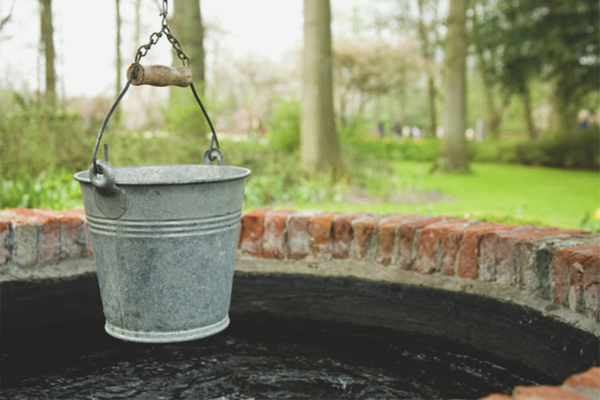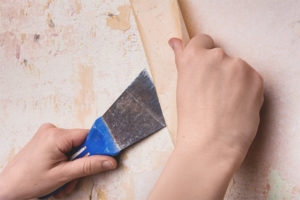The content of the article
Did the well water have a strange taste or smell of sewage? Has it become cloudy or greenish? Are particles of garbage and algae floating on the surface? The reason is bacteria and depressurized seams. The water in the wells, which are badly cared for, stagnates and becomes a source of E. coli and other infectious diseases. To remedy the situation and improve the quality of the drinking liquid, it is necessary to arrange general cleaning and disinfection.
Step 1: Nothing extra
In the well lowered powerful drainage pumps. The equipment can be asked from friends or rented so as not to spend money on an expensive installation. The equipment pumps out dirty water along with sludge and particles of debris. When the liquid is over, the sediments are turned off, and one of the family members descends into the well in order to manually clear the bottom and walls of algae and plaque.
The person who will work below will wear a construction helmet, rubber boots and overalls, as well as a respirator and protective gloves. Upstairs is the second mate. He lowers and raises buckets, takes out the garbage.
A cleaner cleans mucus from concrete rings, sweeps sludge and soil, and disinfects unsealed joints. First, from the cracks remove the remains of sodden cement, algae particles or twigs. Then it lubricates with chlorine solution, and after drying, it seals the seams and pits with a special compound. It is recommended to use a mixture of cement and sand, which quickly hardens and normally tolerates high humidity.
Step 2: Filter Layer
In order to prevent silt from accumulating at the bottom of the well, it is recommended to build a filter installation. It will take pebbles small and large fractions. Suitable:
- pebbles;
- zeolite;
- schungite.
If you lay calcareous crushed stone at the bottom of the well, the water will become turbid. Granite species are considered dangerous, because they have a high radioactive background. If drinking liquid has a red or brown tint, it is recommended to stay on shungite.The material absorbs particles of iron and other harmful impurities.
Installation of the filter is carried out in several stages:
- To build a pallet of aspen boards corresponding to the diameter of the well.
- Lay out on the bottom a layer of cleaned river sand 10–15 cm high. Choose a coarse-grained material that is pre-disinfected.
- An aspen shield is laid over the sand, which is fixed with wooden or iron wedges.
- Cover the pallet with geotextile. Only a variety with good water permeability will do. The correct material is thin, but dense, resembles a coat lining.
- Thanks to textiles, it will be easier to remove and replace the layer of gravel, but you can get by with an aspen shield.
- A layer of sand is poured on the tray, then of small shungite or pebbles. The diameter of the stones is 1.5–2 cm. The height of the gravel filter is 20–25 cm.
- Coarse fractions are laid over small pebbles.
Shungite or zeolite is washed in advance in order to clear the crumbs, otherwise you will have to wait until the dust settles and then pump the water out of the well at least 3-4 times. After all the manipulations, the liquid will become transparent and safe.
About 200 kg of shungite are poured into a standard well.When the dust settles, you need to go down and evenly distribute the material on the bottom of the well with a rake.
If during the cleaning a spring was found, from which turbid water is beating, a layer of anthracite is placed on top of shungite, then quartz is added and all is covered with silicon. A filter consisting of four or more levels detains even iron.
Step 3: Disinfection
The walls of the mine, from which they removed plaque and dirt, are coated with a chlorine solution:
- A liter of liquid is combined with 5 g of pure substance or 15 g of lime.
- Insist 2-3 hours, then pour the resulting product into a bucket.
- In the finished solution, moisten the sponge or whitewash brush.
- Impregnate the walls of the mine with chlorinated liquid.
- Leave on for 3-4 hours, then wash off.
- Water is pumped out and poured. It can not be drunk or used for watering plants.
The well shaft is clean, but it is necessary to destroy the bacteria that live in the spring water. Drainage pumps are turned off. While the building is gradually filled with liquid, a concentrated chlorine solution is prepared:
- Fill one-liter jar with cold filtered water.
- Put in it 200 g of pure chlorine.
- Stir with a wooden stick, close the container with a plastic lid, shake.
- Means insist 2 hours, then drain the solution, leaving a precipitate in the bank.
- Chlorinated liquid is poured into the well.
The structure is covered with iron sheet or thick film. It is important that there are no holes in the lid and ring of the well through which chlorine can evaporate.
After 12 hours or a day, another portion of the concentrated solution is poured into the mine. The next day, include drainage pumps and pump out the disinfected water. The procedure is repeated twice or three times. Liquid that contains chlorine should not be used. It is advisable to pour it into a specially prepared pit located at a distance of 20–30 m from the well.
Instead of a concentrated powder, use the drug "Whiteness", intended for washing. A bottle of funds mixed with 10 liters of water, and then poured into the well.
Step 4: Disposal
If an incomprehensible reddish or brown liquid flows from a crane, it means that there is a lot of iron or manganese in underground streams. Only a special filtering unit will cope with the problem.A layer of shungite and a pond aerator can clear drinking water from a small amount of impurities and heavy metals.
The device promotes the oxidation of iron, which turns into an insoluble precipitate and remains in pebbles. The compact device works all year round and protects against bacteria and germs. The aerator is supplemented with an ultrasonic washing machine. Recommend to buy the most powerful option. The sound waves that the device produces triggers chemical reactions and contribute to the formation of atomic ozone, which is considered the strongest of oxidizers.
The aerator is hidden in a plastic case from a ten-liter gas canister. The top of the tank is cut, but not discarded. In the bottom make several holes for draining condensate. The device and the carrier are attached to the inner wall, because the aerator operates from the electrical network.
The cover is put on, the cord is pulled through the neck of the canister. It is not necessary to close the opening so that air enters inside the plastic case. Both parts of the tank fasten construction tape. The canister is lowered into the well, attached to the mine or iron bar with a metal cord.Separately, the ultrasonic machine and parts of the aerator, which should float in liquid, are immersed in water.
Both devices are connected to the network using a 6A machine. Protect the device from short-circuit protection of the RCD. Recommend a model with a current response of 10 mA.
Aerator and ultrasonic machine will clean the water from impurities and microbes for 5-7 days. Well before installing the device disinfect with chlorine or "Belize". Water can be drunk when the characteristic odor disappears, and the liquid becomes clear and clean.
Extra help
Residents of polluted regions sometimes cannot completely get rid of bacteria that cause infectious diseases. In this situation, there are two options: buy drinking water, and use well water for irrigation and other domestic needs, or purchase a special disinfectant cartridge.
In a small cylindrical capsule is a ceramic container in which bleach is poured. The cartridge regularly allocates a small portion of the funds. Doses enough to kill germs. Water has a characteristic chlorine flavor and odor, but it is safe for humans and animals.
The only minus of the cartridge is that you have to recharge it every month. Recommend to contact professionals from SES who know how to handle bleach.
You can self-disinfect the drinking liquid. First, calculate the volume of the well, then prepare a one percent solution: 10 g of bleach per liter of cold water. Insist, separate the disinfectant from the sediment. At 1 cu. meter of water take 800 ml of the finished solution. If the drinking liquid has a faint characteristic aroma, then everything is correct.
In order for the water to always be transparent and of high quality, it is necessary to clean the well annually and periodically disinfect. It is imperative to use filters, as well as regularly take samples in the SES to check the drinking liquid for the presence of infections and microbes.
Video: how to clean a well, column or well











To send